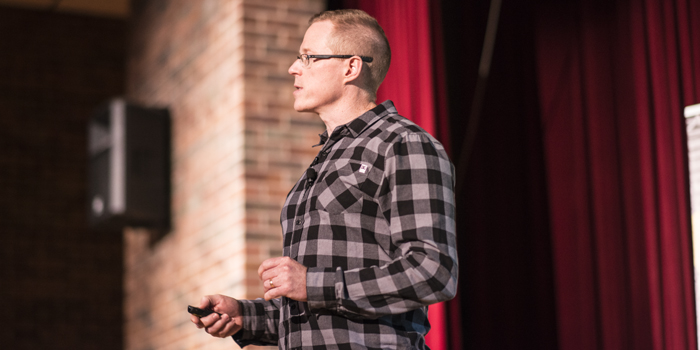
In 2005 Chris Cooper opened Catalyst Fitness, a personal training facility specializing in sport conditioning for hockey players. Three years later after some success he found CrossFit, fell in love with the business, and thought he would hit the jackpot by opening CrossFit gyms and attracting strength athletes. But his CrossFit endeavor didn't work out, and after six months of failed business he was nearly bankrupt. With no clue how he was going to pay for his kid's college or ever retire, he wrote a $500 check (with money he didn't even have in his account) to a local business mentor in his area who was in the process of taking on five small business owners and teaching them how to be profitable.
To make his $500 investment worth his while, Cooper wrote done every single thing he learned from his mentor and started a blog to share his new perspectives on business. After 400 blog posts and a lot of new discoveries about running a successful business, gyms started inviting Cooper to speak at their facilities. He soon after decided to compile the best information from his blogs to create a book and published Two-Brian Business.
In this video from the elitefts Fitness Professional Summit, Cooper discusses the origin of his three books (Two-Brain Business, Two Brain Business 2.0, and Help First), explains the two biggest takeaways of his presentation, and teaches several important business lessons for gym-owners.
First, Cooper gives the two big takeaways he wants everyone to remember from this lecture:
1. Take action.
Education is awesome—Cooper has read Tim Ferris' work and thought it was great—but if you don't take action on those things, it doesn't mean anything at all. Your life has to be about action.
2. Perfect is the enemy of good.
Don't wait until conditions are perfect to make your move. Don't wait until you have the perfect blog post to make a post. Don't wait until you have the perfect slideshow to make a presentation. If you remain passive until everything seems perfect, you'll never accomplish anything.
Cooper then discusses one of the most common questions gym-owners must address: What makes your staff happy? How can you mentor them to have meaningful careers in fitness? Usually gym owners first think about compensation and the amount of money their staff members make. This is an important factor, but only if you know how to address it. Most gym-owners, however, don't know how.
Cooper says that the number one problem with gym-owners is that they don't pay attention to the right metrics. What matters isn't the number of clients you have, but this often the number that gym-owners care about. To demonstrate this point, Cooper shares a story of a gym in Manhattan with 11,000 clients, two locations, and $3.4 million in gross revenue. But the owners took home $30,000 each — not even enough money to live in their city. You have to focus on profitability if you want to succeed.
Cooper also shares The 4/9 Model: Imagine that each dollar you bring into your gym is broken down into nine equal parts. The first 2/9 shoulder cover your fixed costs, including overhead such as rent, electricity, heat, your cell phone, and other bills. This should all fit within 25% of your gross revenue. The next 3/9 should be profit. This is what pays you but it's also what funds new equipment and improvements for your gym. The remaining 4/9 is what you use for your staff.
His final point in the video is that action is more important than education. If you remember nothing else from his lecture, remember this principle.









